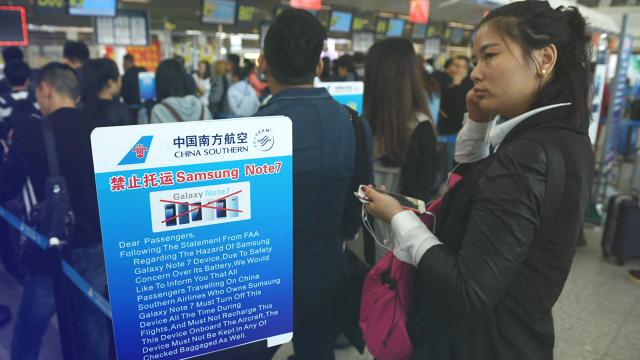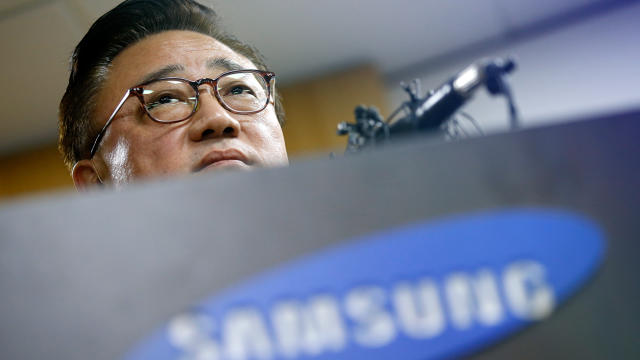How Did Samsung Botch The Galaxy Note 7 Crisis? It’s A Failure Of Leadership
In recent years, Samsung has been trying to “humanize” its image in the U.S. You can see it in the branding, the TV ads, the way the company puts on a show at its product launches. It was making progress at becoming a more likable brand. And the company was having a very good 2016, with sales of the company’s Galaxy S6 and S7 phones booming around the world.
Then in just the last five weeks, ever since the first reports in early September about Galaxy Note 7 batteries bursting into flames, it all started to go downhill, and today Samsung’s brand seems in worse shape than ever. After a month of product recalls, investigations, and damage control, Samsung finally made the stunning announcement that it would permanently discontinue the Note 7 on Tuesday morning. And amid reports that Samsung still doesn’t even really know the source of the problem—hundreds of engineers have been unable to reproduce the exploding battery issue, according to the New York Times—it seems clear that its handling of the crisis has been botched by a failure of leadership.
Soon after the first reports emerged, with 35 cases of phones exploding, Samsung announced that it was halting production of the devices and starting an “exchange program” to get the defective phones out of the hands of consumers. Then lightning struck on September 23 when users began reporting that even the replacement phones Samsung had been distributing through carriers were exploding. On October 5, a replacement Note 7 caught on fire in a man’s pocket on a Southwest plane prior to takeoff. Another Note 7 burned a young Minnesota girl’s hand. Then another explosion in Kentucky. Then another in Virginia.
And as Above Avalon analyst Neil Cybart points out, these Note 7s weren’t just overheating or melting down or imploding—they were exploding like bombs. They were setting whole rooms on fire.

And it’s when the replacement phones began blowing up that things started to go south for the Note 7 and Samsung. Until then, consumers had a certain amount of good will toward the company. The vast majority of Note 7 owners who returned their phones requested another Note 7 instead of switching to another brand (as Samsung was quick to point out).
People were left to wonder why Samsung didn’t pull the devices off the market and fix the problem once and for all. Instead Samsung rushed to get new devices out to consumers. Then, when the replacement devices began blowing up too, Samsung didn’t immediately halt production again, but rather continued inviting Note 7 owners to come in and pick up one of the replacement devices that were supposedly safe.
Technalysis president Bob O’Donnell points out that recalls of tech products are not unprecedented, but the Samsung recall is something new. “We’ve had other companies that have had recalls, and we always gave them the benefit of the doubt. We always assumed the vendor would fix the problem and it would be okay. Well, this time it’s not okay.”
The Samsung recall is a big one. It’s the first one I know of in which announcements were made at airport gates that the device would not be allowed on planes until they were powered down completely. All those public announcements were like negative ads, and they were heard by hundreds of thousands of people.
So, what happened? How could a sophisticated electronics giant with decades of experience put such a faulty product on the market? Samsung rushed the device to market ahead of the September 7 launch of the iPhone, reported Bloomberg, and several of my sources offered similar accounts. “Samsung . . . did not do the type of quality assurance and testing to make sure the Galaxy Note 7 was designed properly and totally safe,” said Creative Strategies president Tim Bajarin.
“This will have a negative impact on their overall brand and puts in question their ability to create a high-end smartphone that will be safe,” Bajarin says. “This will have an economic impact on them in the $10 [billion] to $14 billion range, and unless handled properly, it could have a serious impact on their overall brand for some time.”
As the months pass in the wake of the Note 7 debacle, it will be the damage to the brand that we should be watching. Phones come and go. Profits come and go. But loss of credibility is a pain that lingers.

From the very beginning, Samsung should have been more honest about the problem. It should have called the thing by its proper name—a product recall. Instead it called it an “exchange program.” This gives the thing a neutral, harmless sound, like a program for getting rid of unwanted gifts at Macy’s after Christmas. Just (October 29, 2016), when the news was already out that Samsung had (temporarily) stopped production of the Note 7, the company sent out a statement saying it had “adjusted its production schedules.” It’s this sort of mealymouthed talk that gives the impression that the whole thing is more about spin and share price than the real needs—indeed the safety—of customers.
I was willing to forgive Samsung’s PR errors until the replacement phones began blowing up. I believed the theory that the battery problems could be traced to one supplier and would soon be fixed. That turned out not to be true. It’s still unclear exactly why the Note 7 batteries blew up, and Samsung isn’t offering much insight.
“From questionable actions regarding Note 7 replacement units to the failure of establishing an open communication channel to consumers, Samsung has allowed this situation to deteriorate over the past three weeks,” Above Avalon’s Cybart says.
IDC’s William Stofega points out that Galaxy Note sales typically represent about 10% of total Samsung phone sales, and that half of those customers may defect to Apple.
Cybart says Samsung’s mishandling of the Note 7 situation has to be laid at the foot of the company’s leadership.
“Regardless of the root cause, the only way Samsung will be able to learn from this experience is to have strong leaders address shortcomings found within the company’s culture and processes,” he says. “Without proper leadership, Samsung risks having this crisis begin to impact other parts of its business, and jeopardize its long-term relationship with the general public.”
Fast Company , Read Full Story
(90)














